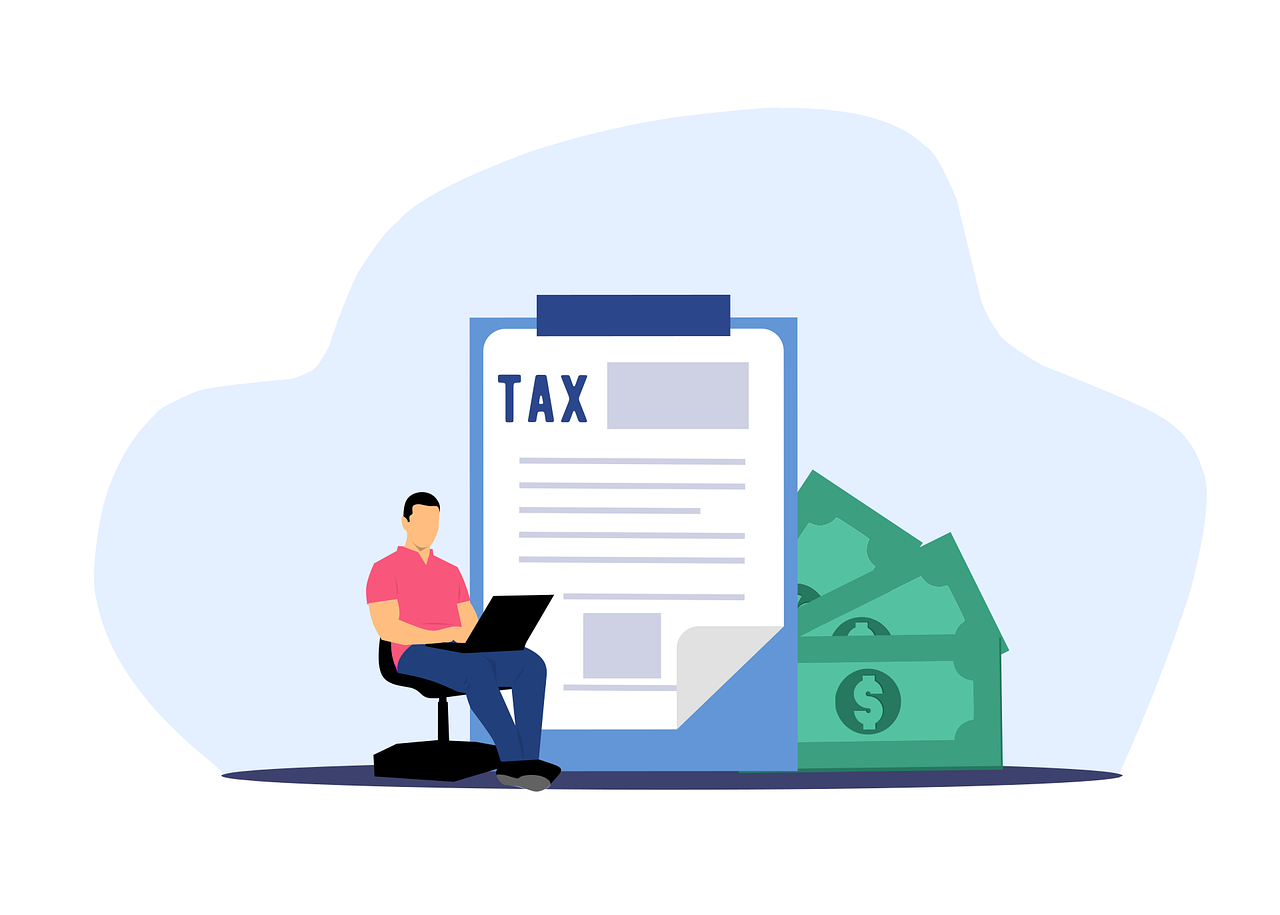Posted By Lineweaver Financial Group
December 16, 2025
Category: Tax Planning
By Mark Sipos,
LFG Tax Director
The One Big Beautiful Bill Act (OBBBA) was enacted in July 2025 and contained several new tax deductions that we have previously highlighted for you. This month, we want to focus on the specifics of four of the new tax deductions that may be available to you.
Auto Loan Interest Deduction
This is a temporary tax deduction available for qualified vehicles purchased in tax years 2025 through 2028. The key details for you to be aware of are:
You can deduct up to $10,000 in interest paid annually.
The loans must have originated after December 31, 2024, and before January 1, 2029.
This is an “above-the-line” deduction, meaning you do not have to itemize your deductions to claim the deduction.
The deduction is subject to Modified Adjusted Gross Income phase-outs.
The vehicle must be a new vehicle, gross vehicle weight must be under 14,000 pounds, and final assembly must have occurred in the United States. VIN numbers starting with a “1”,”4”, or “5” typically indicate U.S. assembly.
Commercial vehicles do not qualify, personal use only.
Qualified Tips Deduction
Qualified tips deduction provides a temporary tax deduction available for tax years 2025 through 2028.
Deductible amount is $25,000 annually per individual. The tips must be received from an occupation that customarily and regularly receives tips, and the tips must be voluntary.
The deduction is subject to Modified Adjusted Gr
Posted By Lineweaver Financial Group
December 16, 2025
Category: Market Commentary
By Chad Roope, CFA ®
Chief Investment Officer
On Wednesday, Dec. 10, the Federal Reserve (Fed) cut the Fed Funds Rate by one-quarter of a point (0.25%) to 3.5% as widely expected. The Fed Funds Rate is the baseline interest rate the Fed sets to control other interest rates and money supply throughout the economy. Lower interest rates usually stimulate economic growth as they make money less expensive to borrow, and higher interest rates usually slow economic growth as they make money more expensive to borrow. The Fed raises and lowers rates to try and balance inflation and employment, with the goal of fostering solid economic growth that supports full employment without stoking excessive inflation. As seen in the chart below, the Fed has now cut rates by 1.75% from 5.25% to 3.5% since September 2024, after an aggressive hiking cycle and pause that started in March 2022.
The hikes that started in March 2022 were designed to slow economic growth to stave off one of the largest inflation spikes in U.S. history post-COVID. The Fed then judged in September 2024 that the mission had largely been accomplished and that rates needed to come down to support employment and the economy.
Now, however, we have likely entered a new phase. Fed Chairman Jerome Powell indicated last Wednesday that the Fed is now “well positioned to wait and see” given the rate reductions since September 2024. We think this means they will hold interest rates steady for some
Posted By Lineweaver Financial Group
November 11, 2025
Category: Investment Strategy
Our team employs external financial research from many different economists, analysts and research firms. This research provides valuable input into how we actively monitor and manage your portfolio. Periodically, we share this research with you in addition to our own analysis and market commentary.
Linked below is a piece by J.P. Morgan that examines the long-term structural demand for rare earths, which may present an attractive investment opportunity. Enjoy the analysis from J.P. Morgan, and thanks for your confidence in our team at Lineweaver!
Please click here to
Posted By Lineweaver Financial Group
November 11, 2025
Category: Tax Planning
By Mark Sipos, LFG Tax Director
The holidays are near and many of you start thinking of giving – whether directly to a loved one or through your favorite charities. Year-end gifting offers two main types of tax benefits: reducing your taxable income through charitable contributions and reducing your taxable estate through gifts to individuals.
Gifting to Individuals
Gifts to individuals are generally not income tax-deductible for the donor, but strategic gifting can help manage gift and estate taxes.
Annual Gift Tax Exclusion: For 2025, you can give up to $19,000 per person to an unlimited number of individuals without any gift tax implications or the need to file a gift tax return (Form 709). Married couples can "gift-split" to give a combined $38,000 per recipient.
Lifetime Gift and Estate Tax Exemption: Gifts exceeding the annual exclusion amount are not immediately taxed but reduce your unified lifetime gift and estate tax exemption. For 2025, this exemption is $13.99 million per individual ($27.98 million for a married couple).
Direct Payments: Paying a loved one's medical expenses or educational tuition directly to the institution or provider is not considered a taxable gift and does not count against your annual exclusion or lifetime exemption.
Gifting Appreciated Assets: Gifting cash is generally simpler. If you gift appreciated assets (like stock) to an individual, their cost basis is the same as yours (the donor's basis). This means th
Posted By Lineweaver Financial Group
October 13, 2025
Category: Tax Planning, Tax, Financial Planning
By Mark Sipos, LFG Tax Director
While the holiday season may seem far away, the final quarter of the year is the most important time to prepare for taxes. Once the calendar turns, your options for reducing tax liability and maximizing savings narrow significantly. Taking action now allows for flexibility and better results.
One of the first steps is reviewing income, deductions, and potential tax strategies while there is still time to implement them. For some, it may make sense to defer income to the new year or accelerate expenses into the current year. Charitable contributions and pre-paying certain taxes are additional ways that have the potential to strengthen your tax position before December 31.
The new “Senior Bonus," an additional $6,000 per person for those age 65 and over, can be a great opportunity to create tax savings, increase ROTH conversions, and help offset taxes on Social Security income. There are income thresholds that can impact the amount you can deduct, so careful planning is important.
Investors should also consider tax-loss harvesting, a strategy that offsets gains with underperforming investments. Starting this process early can help maximize tax benefits and prepare portfolios for the year ahead.
Retirement contributions are another key area. Individuals still have time to maximize 401(k), 403(b), 457, Health Savings Accounts, and Flexible Spending Plans. Business owners can take advantage of SEPs, SIMPLEs, or even cas
Posted By Lineweaver Financial Group
October 13, 2025
Category: Financial Planning, Investment, Federal Government
Our team employs external financial research from many different economists, analysts and research firms. This research provides valuable input into how we actively monitor and manage your portfolio. Periodically, we share this research with you in addition to our own analysis and market commentary.
Linked below is a piece by J.P. Morgan that examines the investment implications of the government shutdown. The federal shutdown, which started Oct. 1, poses three broad problems for the economy, namely, the drag from the shutdown itself, the confusion it is causing on the state of the economy and the fact that it has occurred when the economy was likely already entering a soft patch. Enjoy the analysis from J.P. Morgan, and thanks for your confidence in our team at Lineweaver!
Please click here to
Posted By Lineweaver Financial Group
September 18, 2025
Category: Tax
By Mark Sipos, LFG Tax Director
Federal Reserve interest rate drops indirectly impact taxes by influencing the economy, which can affect how and what you're taxed on. Lower rates can lead to higher asset values or increasing potential capital gains taxes, but they also reduce inflation's effect on tax bracket adjustments, potentially pushing more income into higher tax brackets. Additionally, lower rates encourage borrowing and spending, which can be inflationary and impact future tax policies, and can make certain charitable giving strategies more attractive.
Impact on Income and Capital Gains Taxes
Inflation and Tax Brackets:
Lower interest rates are often linked to slowing inflation. Since federal tax brackets and standard deductions are adjusted for inflation, a slowdown in inflation means smaller adjustments, potentially pushing more of your income into higher tax brackets and increasing your tax liability.
Asset Values and Capital Gains:
Lower borrowing costs from rate cuts can boost asset values. This increased value can lead to higher capital gains when those assets are sold, potentially resulting in higher capital gains taxes.
Higher Interest Income Tax:
Lower rates mean lower interest earned on savings accounts and investments, but this lower interest income is still taxable at ordinary income tax rates. Tax-free investments or qualified dividends may be more tax-efficient.
Impact on Tax Policy
Shifting Tax Structures:
Sustained low
Posted By Lineweaver Financial Group
September 18, 2025
Category: Market Commentary
By Chad Roope, CFA ®, Chief Investment Officer
This month, we highlight the key outcomes of the Federal Reserve (Fed) interest rate decision announced on Sept. 17. Overall, the decision was what we expected. Here is a brief summary:
Interest rate cut: The Fed cut its federal funds rate by 0.25 percentage point, lowering the target range to 4.00%–4.25%. This is the first rate cut since December 2024.
Voting: The decision was mostly unanimous: 11 out of 12 voting members supported the 0.25-point cut. The sole dissenting vote came from Stephen I. Miran, who preferred a larger cut of 0.50 percentage points.
Balance of risks & stance:
The Fed noted that growth has moderated, job gains have slowed, and unemployment has edged up, though it still remains low.
Inflation remains elevated but isn’t accelerating at the same pace; there’s more concern now about economic weakness and risks to employment.
The Fed emphasized that it will carefully assess incoming data and adjust policy as appropriate.
Projections / Outlook
From the Fed’s Summary of Economic Projections released alongside the decision:
GDP growth:
The median projection for U.S. real GDP growth in 2025 is about 1.6%, rising modestly in subsequent years.
Unemployment rate:
The unemployment rate is expected to be around 4.5% in 2025, with slight declines in 2026-2027, barring worse-than-anticipated weakening.
Inflation (PCE):
Inflation (the PCE m
Posted By Lineweaver Financial Group
August 12, 2025
Category: Tax Planning
By Mark Sipos, LFG Tax Director
The passage of the One Big Beautiful Bill Act has been one of the most discussed topics coming out of Washington in the past few weeks. LFG Tax Services is diving into the new legislation, deciphering what it means for our clients, and keeping a close watch on tax planning opportunities and IRS interpretations of some of its components. Here are a few highlights we think will be of interest to you:
The TCJA rate schedules for tax years beginning after December 31, 2017, are now permanently extended, as well as several key parts of the 2017 Act.
No Tax on Tips: A temporary deduction of up to $25,000 in tip income for workers in “customarily tipped” occupations. Individuals phased out for MAGI above $150,000 and Joint filers at $300,000. Expires December 31, 2028.
No Tax on Overtime: Temporary above-the-line deduction of $12,500 (single) / $25,000 (joint). Deduction phases out at $150,000 of MAGI (single) / $300,000 (joint), expiring at the end of 2028.
The lifetime estate tax exemption has been permanently increased to $15 million (indexed for inflation) per US person. The Act stopped short of a full repeal and would essentially extend the current generous lifetime estate tax exemption. The limit means that only the wealthiest 1% or fewer taxpayers would ever face a tax on their estate after death.
The qualified business income deduction under IRC Section 199A is now made permanent at 20%. The phase-in of the limit
Posted By Lineweaver Financial Group
August 12, 2025
Category: Financial Planning, Investment, Finance
By Chad Roope, CFA ®, Chief Investment Officer
Compounding is the superpower of investing. Following the Rule of 70, an investment averaging 10% per year will double in just seven years. That’s the kind of growth that builds real wealth over time.
But there’s a catch. Anything that slows compounding, even slightly, can have a dramatic impact on your long-term results. One of the biggest threats to that is unnecessary taxes.
In the chart below, a JP Morgan analysis shows that a modest 1% annual “tax drag” on a $1 million investment in the U.S. stock market from 2014 to 2024 would have reduced its value by $326,000. At 2%, the loss jumps to $625,000. That’s money that could have been working for you.
We all must pay our fair share of taxes. However, we should be very mindful about not paying extra. At Lineweaver, we employ proven, proactive strategies to help reduce unnecessary taxes so you can keep more of your gains compounding year after year.
Systematic Tax Loss Harvesting
Throughout the course of the year, some investments rise while others fall. That’s diversification for you. But we can help with taxes and get the benefits of diversification at the same time. For example, if a particular company hits a rough patch and we have a loss in the stock in a taxable account, we can sell the stock and harvest the loss to help with taxes. We can then reinvest the proceeds in a different company that we either like better or
Posted By Lineweaver Financial Group
August 12, 2025
Category: Cybersecurity, Scam, Security
At Lineweaver, your financial security is one of our highest priorities, and that means staying ahead of potential threats. We are constantly seeking credible, trusted resources to help protect our clients, and when we find information worth sharing, we make it a point to get it into your hands.
That’s why we want to share this “Scam Squad Guide” developed by Cuyahoga County’s Department of Consumer Affairs. This valuable resource offers clear, practical strategies to help you recognize, avoid, and report scams before they can cause harm. By understanding how scams work and having a plan in place, you can take an important step toward safeguarding both your personal information and your financial accounts. To read the guide, follow this link: “Scam Squad Guide: Simple ways to spot, avoid and report scams”
For those of you who live outside of the county, reach out to your county officials for the appropriate contact information to report a
Posted By Lineweaver Financial Group
July 17, 2025
Category: Financial Planning, Estate Plan, Legal
Over the next two decades, Baby Boomers are expected to pass down more than $84 trillion1, making it the largest wealth transfer in U.S. history. For many families, this inheritance represents a life-changing opportunity, but it also comes with important financial challenges.
Navigating an Inheritance: What to Do First
Before making any decisions, take time to process your loss. Once you’re ready, gather all key legal and financial documents such as wills, trusts, account statements, and property titles. Not all assets are taxed or distributed the same, so understanding what you’ve inherited is essential.
For example, an inherited IRA from a non-spouse falls under the SECURE Act and must be emptied within 10 years of the original owner’s death. If a trust is named a beneficiary, the tax bill can hit faster, so it’s important to establish that quickly. A taxable brokerage account is simpler because you get a step 11up in basis to the date 11of 11death value, meaning little or no capital 11gains tax if you sell soon. Non 11qualified annuities are trickier. Earnings come out first and are taxed as ordinary income, and most contracts force you to cash out within five years or start lifetime payouts.
Common Inheritance Mistakes to Avoid
Without careful estate planning, it’s easy to make costly mistakes. One example is naming a trust as a contingent IRA beneficiary without understanding the tax implications. Another is leaving an IRA to one pers
Posted By Lineweaver Financial Group
July 07, 2025
Category: Tax, Social Security, Tax Planning, Financial Planning
By Mark Sipos, LFG Tax Director
If you’ve worked in a public service job, chances are you’ve heard of the Windfall Elimination Provision (WEP) or Government Pension Offset (GPO). WEP reduced Social Security benefits for individuals with pensions from jobs that didn’t pay into Social Security, and GPO reduced Social Security spousal and survivor benefits for individuals who also received a pension from a job that wasn’t covered by Social Security. But at the beginning of the year, as one of their last acts in office, the Biden Administration passed the Social Security Fairness Act (SSFA), meaning many retirees may see higher monthly payments and possibly retroactive benefits.
Let’s break down what SSFA entails, how the repeals affect you, and what you need to know about the taxation of your Social Security benefits moving forward.
What Changed in 2025?
On January 5, 2025, the Social Security Fairness Act officially repealed WEP and GPO. This change applies to Social Security benefits payable for any months after December 2023. That means if you were previously impacted by WEP, your benefit could increase, possibly significantly.
The repeal also opens the door for retroactive payments dating back to January 1, 2024. In total, more than 3.2 million Americans are expected to benefit from the elimination of WEP and GPO, according to the Social Security Administration.
How WEP, GPO Repeal Impacts Public Employees and Retirees
The repeal
Posted By Lineweaver Financial Group
July 07, 2025
Category: Market Commentary, Bonds, Financial Strategy, Financial Planning
By Chad Roope, CFA ®, Chief Investment Officer
U.S. municipal bonds (munis) are prized for their tax advantages, but their historic tendency to provide a stable source of return also makes them valuable amid market volatility and uncertainty. Munis are generally less vulnerable to inflation shocks or the crossfire of global trade policies because they are often linked to public authorities that provide fee-based essential services, such as waste collection and public transportation, or secured by taxes on sales, property, and income. Munis have also shown historically low default rates and high credit ratings (Aa3 versus Ba1 for global corporate debt, on average) thanks to the disciplined finances and stable revenues of most state and local governments. Tax equivalent yields of munis have reset to levels not seen in over a decade, with some investment grade yields north of 6%. Against this backdrop, we see an opportunity to increase allocations, particularly as the outlook for limited supply relative to demand in July and August could bolster performance.
Additionally, munis offer a possible antidote to tariffs and recession concerns. Amid Wall Street’s growing concern over a potential tariff-induced recession, investors are seeking refuge in areas least affected by global supply chains. This is fueling interest in state and local government bonds for the following reasons:
Limited exposure to trade risks: A broad-based economic slowdown would reduce state r
Posted By Lineweaver Financial Group
June 26, 2025
Category: Legacy Planning, Estate Planning, Financial Plan
Over the next two decades, Baby Boomers are expected to pass down more than $84 trillion, making it the largest wealth transfer in U.S. history. For many families, this inheritance represents a life-changing opportunity, but it also comes with important financial challenges.
Navigating an Inheritance: What to Do First
Before making any decisions, take time to process your loss. Once you’re ready, gather all key legal and financial documents such as wills, trusts, account statements, and property titles. Not all assets are taxed or distributed the same, so understanding what you’ve inherited is essential.
For example, an inherited IRA from a non-spouse falls under the SECURE Act and must be emptied within 10 years of the original owner’s death. If a trust is named a beneficiary, the tax bill can hit faster, so it’s important to establish that quickly. A taxable brokerage account is simpler because you get a step-up in basis to the date-of-death value, meaning little or no capital-gains tax if you sell soon. Non-qualified annuities are trickier. Earnings come out first and are taxed as ordinary income, and most contracts force you to cash out within five years or start lifetime payouts.
Common Inheritance Mistakes to Avoid
Without careful estate planning, it’s easy to make costly mistakes. One example is naming a trust as a contingent IRA beneficiary without understanding the tax implications. Another is leaving an IRA to one person and expe
Posted By Lineweaver Financial Group
June 09, 2025
Category: Debt, U.s. Budget, Downgrade
Our team employs external financial research from many different economists, analysts and research firms. This research provides valuable input into how we actively monitor and manage your portfolio. Periodically, we share this research with you in addition to our own analysis and market commentary.
Linked below is a piece from Brian Westbury at First Trust about the timely topics of the recent U.S. debt downgrade by Moody’s, and what it all means in relation to the U.S. fiscal situation. In our view, the current fiscal situation calls for both spending cuts and policies to spur economic growth and efficiency. We think Congress will eventually figure this out over the coming years, but the bond market may have to push them first. Enjoy the analysis from First Trust, and thanks for your confidence in our team at Lineweaver!
Please click here to
Posted By Lineweaver Financial Group
June 09, 2025
Category: Tax, Tax Strategy, Financial Strategy
By Mark Sipos, LFG Tax Director
When it comes to building a smart financial strategy, understanding how your income is taxed is just as important as how you invest it. That’s where the concept of the three tax buckets comes in — a helpful framework used in tax-efficient investing and retirement planning to help you minimize your tax burden and maximize your income.
The first tax bucket is ordinary income, which includes your wages, pensions, Social Security, and interest from CDs, high-yield savings accounts, and money market accounts.
These income sources are taxed at your marginal income tax rate, meaning the more you earn, the more tax you pay. Many people don't realize that interest income stacks on top of other income, potentially pushing them into higher brackets. That’s why understanding after-tax returns is critical when evaluating fixed-income investments.
The second bucket is for capital gains and qualified dividends. This includes gains from selling stocks, ETFs, mutual funds, and real estate. Short-term capital gains (assets held under a year) are taxed at your ordinary income rate.
Long-term capital gains (held for a year or more) are taxed at more favorable rates — 0%, 15%, or 20% depending on your income. Many married couples can earn over $100,000 and still pay 0% capital gains tax, thanks to the standard deduction. This makes capital gains a key part of any tax planning strategy.
The third bucket is the tax-free income bu
Posted By Lineweaver Financial Group
May 13, 2025
Category: Markets, Market Outlook, Market Commentary, Federal Reserve
By Chad Roope, CFA ®, Chief Investment Officer
As expected, the Federal Reserve announced it would maintain the Federal Funds rate range at 4.25% to 4.5% on May 7, 2025, marking the third consecutive meeting without a change. This decision reflects the central bank’s cautious stance given current economic uncertainties, particularly those stemming from recent trade and tariff policies implemented by the Trump administration.
In its official statement, the Federal Open Market Committee (FOMC) highlighted increased risks to both sides of its dual mandate: maximum employment and price stability. The committee noted that while overall U.S. economic output appears solid; unemployment numbers are low and inflation data from March cooled some, the outlook for employment and price stability has become more uncertain due to trade policy developments.
During the subsequent press conference, Fed Chair Jerome Powell elaborated on these concerns, emphasizing that the recent tariffs could lead to higher inflation and slower economic growth. He pointed out that the first quarter GDP had edged down, partly due to businesses accelerating imports ahead of anticipated tariffs, which complicated economic assessments.
Powell also addressed the potential for stagflation – a scenario characterized by rising inflation and unemployment coupled with stagnant demand. He acknowledged that if the tariffs remain in place, they could delay progress on reducing in
Posted By Lineweaver Financial Group
May 13, 2025
Category: Tax Strategies, Tax Planning, Tax Services
By Mark Sipos, LFG Tax Director
Filing season may be over, and nobody wants to think about filing taxes again, but now is the time to get planning ideas into action. Getting an early start on tax planning for 2025 offers greater flexibility, the ability to budget more properly, and may allow you to take full advantage of some planning ideas versus waiting until the last minute. Here are a few things to consider:
Personal Tax Filing Review: Analyze your previous year's tax return. Did you owe a lot? Get a large refund? This can indicate the need for adjustments to your withholdings or tax planning strategies. Did your tax preparer offer any insights to lower your tax bill that need to be executed?
Adjust Tax Withholdings: If you had a large tax bill or refund, use the IRS Tax Withholding Estimator to calculate the appropriate withholding amount and update your Form W-4 with your employer. Tax withholdings on pension distributions can be adjusted using Form W-4P.
Estimate Taxes (if applicable): If you have income not subject to withholding (self-employment, investments, etc.), estimate your tax liability and make quarterly estimated tax payments to avoid penalties and interest. We saw higher tax bills in 2024 due to higher earnings on savings and CDs, and large capital gain distributions.
Optimize Deductions and Credits: Research and identify potential deductions and tax credits you might be eligible for, and plan how to maximize them.
Consider Retirement Contr
Posted By Lineweaver Financial Group
April 09, 2025
Category: Long Term Investing, Investing, Market, Market Volatility, Market Commentary
By Chad Roope, CFA ®, Chief Investment Officer
In times of economic uncertainty, it’s easy for investors to feel uneasy. Whether it’s inflation concerns, political events, or market downturns making headlines, short-term volatility can be unsettling. However, long-term investing strategies have consistently proven to be one of the most effective ways to build wealth and stay on track toward financial goals.
Instead of reacting emotionally to market noise, long-term investors benefit from taking a step back and focusing on the bigger picture. Here’s why that mindset can make all the difference.
The Stock Market Has Recovered from Every Major Crisis
Over the last several decades, the U.S. stock market has faced recessions, geopolitical tensions, inflation spikes, and global pandemics. Despite it all, the market has continued to grow. Investors who stayed committed to their long-term investment strategy have historically been rewarded for their patience. This resilience, explained in the graph below, shows the importance of avoiding knee-jerk reactions and maintaining a diversified portfolio built for the long haul.
Timing the Market Can Hurt Long-Term Returns
Many investors try to avoid losses by pulling out of the market during downturns. But trying to time the market—even with the best intentions—often results in missed opportunities. Some of the strongest market gains have occurred during periods of high volatility. Missing ev






















 Virteom
Virteom